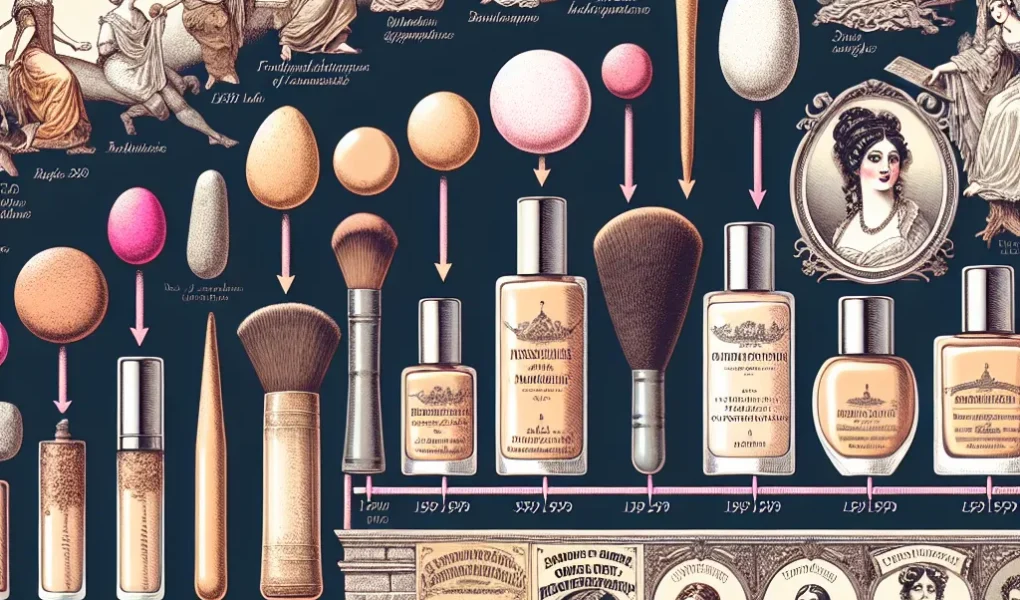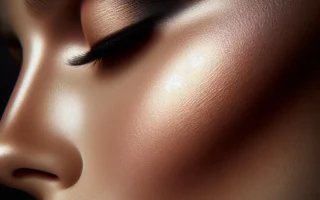The Early Origins of Foundation in Ancient Civilizations
The early origins of foundation can be traced back to ancient civilizations, where people used natural ingredients such as clay, minerals, and oils to create makeup products. In ancient Egypt, both men and women used a combination of substances like ochre and fatty oils to create a base for their makeup. Similarly, in ancient China and Japan, geishas and aristocrats used a mixture of rice powder and lead to create a pale, flawless complexion.
One can draw parallels between the ancient origins of foundation and the timeless appeal of classic nail polish, which has also evolved over the centuries. The tradition of using nail polish dates back to ancient China, where the ruling classes used a mixture of egg whites, beeswax, gelatin, and natural dyes to color their nails in bold and vibrant shades. This cultural practice later spread to other regions, with each civilization adding its unique touch to the classic nail polish formula.
The evolution of foundation and classic nail polish showcases a fascinating journey of beauty and self-expression throughout the ages, from ancient times to the modern era.
The early origins of foundation can be traced back to ancient civilizations, where people used natural ingredients such as clay, minerals, and oils to create makeup products. In ancient Egypt, both men and women used a combination of substances like ochre and fatty oils to create a base for their makeup. Similarly, in ancient China and Japan, geishas and aristocrats used a mixture of rice powder and lead to create a pale, flawless complexion.
One can draw parallels between the ancient origins of foundation and the timeless appeal of classic nail polish, which has also evolved over the centuries. The tradition of using nail polish dates back to ancient China, where the ruling classes used a mixture of egg whites, beeswax, gelatin, and natural dyes to color their nails in bold and vibrant shades. This cultural practice later spread to other regions, with each civilization adding its unique touch to the classic nail polish formula.
The evolution of foundation and classic nail polish showcases a fascinating journey of beauty and self-expression throughout the ages, from ancient times to the modern era.
The Early Origins of Foundation in Ancient Civilizations
Foundation makeup has a rich history that dates back to ancient civilizations, where people used various substances to enhance their facial features. The early origins of foundation can be traced back to ancient Egypt, where both men and women used a mixture of lead ore and copper to create a base for their makeup. This concoction not only provided a smooth canvas for other makeup application but also served as a protection against the sun.
In ancient Rome, the use of foundation continued to evolve, with women using a mixture of barley flour, olive oil, and herbs to create a more natural-looking base for their makeup. The desire for a flawless complexion has been a timeless pursuit, as evidenced by the efforts of ancient civilizations to create their own versions of foundation.
As civilizations progressed, so did the formulations of foundation. In the modern era, foundation has become an essential part of makeup routines, with a wide range of formulas to cater to different skin types and preferences. From the heavy and cakey foundations of the past to the light and breathable formulas of today, the evolution of foundation reflects not only advancements in cosmetics but also shifting beauty standards and cultural influences.
Understanding the early origins of foundation in ancient civilizations provides a valuable insight into the enduring quest for beauty and self-expression throughout human history.
The Renaissance and the Rise of Cosmetics: Foundation Through the Ages
During the Renaissance period, the use of cosmetics and foundation became increasingly popular among the upper echelons of society. The desire for pale skin was a symbol of wealth and nobility, leading to the widespread use of lead-based white makeup, which unfortunately had detrimental health effects. Women used various concoctions such as ceruse, a lead-based powder, to achieve the desired porcelain complexion. The toxic nature of these substances caused irreparable damage to the skin, leading to a host of health issues.
Despite the health risks, the trend of using makeup continued to evolve during the Renaissance, with the formulation of new cosmetic products. Some women utilized mixtures of egg whites and powdered starch to create a lighter foundation, leading to a slightly less harmful alternative. The Renaissance also saw the emergence of scented powders and cosmetic blends, reflecting a growing interest in the sensory experience of makeup application.
As society progressed and scientific advancements were made, the dangers of lead-based makeup became more widely recognized, prompting a shift towards safer, more refined formulas. The evolution of foundation from its hazardous origins during the Renaissance to the modern, safe formulations available today signifies a significant milestone in the history of cosmetics.
Revolutionizing Makeup: The Industrial Era and the Birth of Modern Foundation
During the industrial era, the revolution of makeup and the birth of modern foundation took place, marking a significant shift in the way cosmetics were produced and consumed. With the advent of industrialization, cosmetic products, including foundation, began to be manufactured on a larger scale to meet the growing demand of the masses.
One of the pivotal moments in the evolution of foundation was the development of liquid foundation by the German beautician Max Factor in the early 20th century. This innovation allowed for a smoother application and a more natural look, setting the stage for the modern liquid foundation formulas that we use today.
Furthermore, advancements in technology and chemistry led to the creation of a wider range of foundation shades and formulations to cater to diverse skin tones and types. This marked a departure from earlier formulations that were limited in their range and often contained heavy ingredients.
The industrial era also saw the rise of iconic beauty brands such as Estée Lauder and L’Oréal, which further propelled the popularity and accessibility of modern foundation products. These companies embraced mass production methods and innovative marketing strategies, bringing foundation to the forefront of the cosmetics industry.
In conclusion, the industrial era was a transformative period for the evolution of foundation, paving the way for the diverse and advanced formulas that are widely available in the modern market. The intersection of technological innovation, mass production, and evolving beauty standards revolutionized the way foundation was produced and consumed, shaping the cosmetic industry as we know it today.
Contemporary Trends: Innovations in Foundation Formulas
Contemporary trends in foundation formulas have seen a significant evolution in recent years, reflecting the changing needs and preferences of modern consumers. With a growing emphasis on skincare benefits and natural-looking coverage, innovative foundation formulas have become the focal point of the beauty industry. The shift towards lighter textures, breathable finishes, and long-wearing capabilities has redefined the traditional concept of foundation.
Furthermore, the integration of skincare ingredients such as hyaluronic acid, vitamins, and antioxidants into foundation formulas has elevated their functionality, offering additional nourishment and protection to the skin. This convergence of skincare and makeup has given rise to a new generation of multipurpose foundations that not only provide coverage but also address specific skin concerns, blurring the line between traditional makeup and skincare products.
In addition, the expansion of shade ranges to be more inclusive and representative of diverse skin tones has been a prevailing trend, driven by the demand for greater diversity and inclusivity within the beauty industry. Brands are increasingly recognizing the importance of catering to a wide spectrum of skin tones, resulting in the development of extensive shade ranges that cater to underrepresented populations.
Overall, the contemporary landscape of foundation formulas is characterized by a fusion of skincare benefits, diverse shade ranges, and advanced technologies, marking a departure from the one-size-fits-all approach of the past. As consumer preferences continue to evolve, the beauty industry is likely to witness further innovations in foundation formulas, setting the stage for a dynamic and progressive future.



